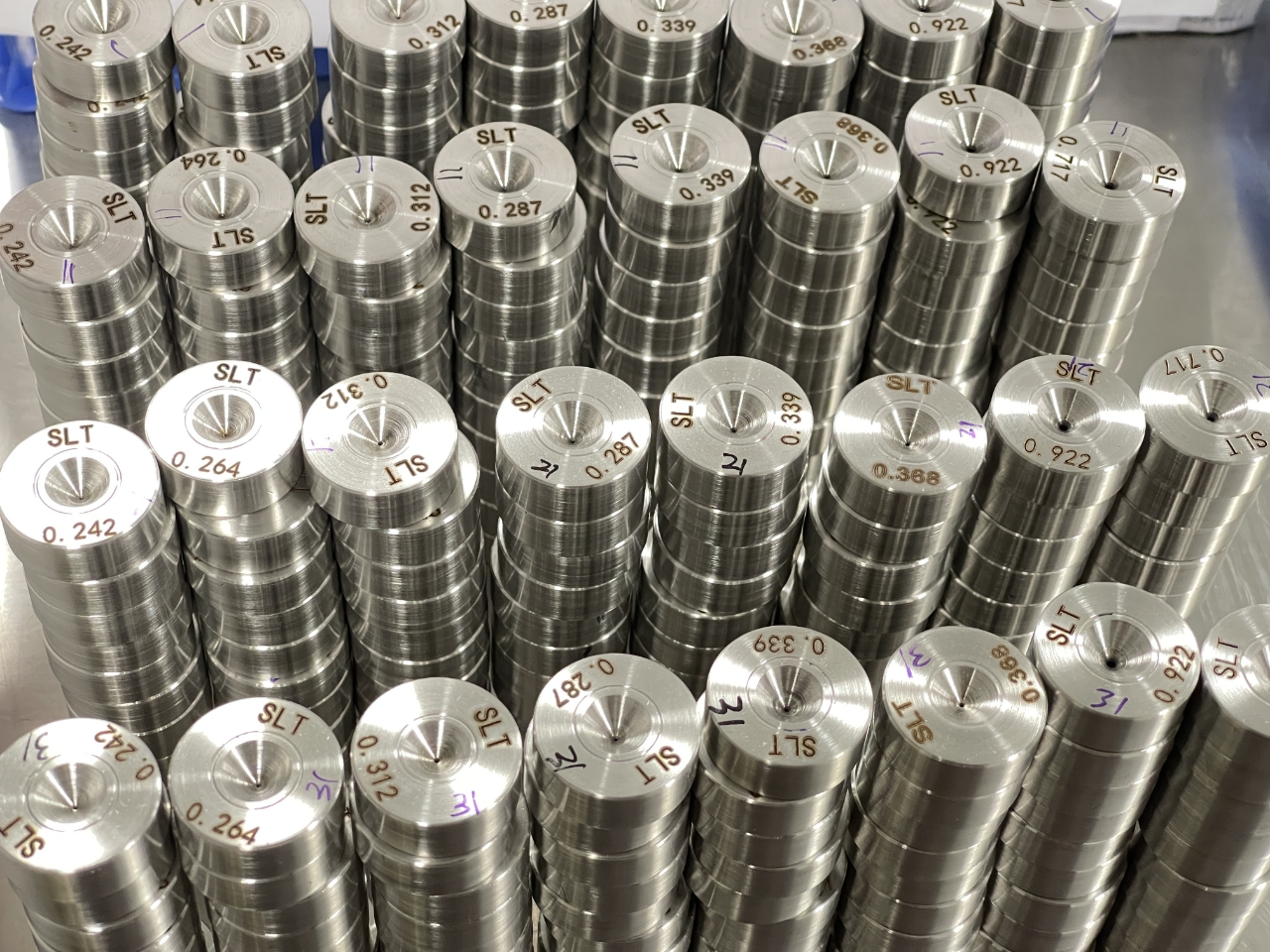Which kinds of drawing mold are divided into, where to use?
Which kinds of drawing mold are divided into
where to use?
Which kinds of drawing mold are divided into, where to use?

Wire drawing die is widely used in electronic devices, radar, television, instruments, aerospace and other industries of high-precision wire, as well as applied in tungsten wire, molybdenum wire, stainless steel wire and other industries of wire drawing die. Secondly, wire and cable wires and various alloy wires are made of diamond wire drawing die.
The working principle of the wire drawing die is to thin the wire from the coarse, and gradually reach the desired size of the die. This special mold is a wire drawing die. Drawn die seals are usually made of natural diamond and synthetic diamond (synthetic diamond including ge, pcd, synthetic materials, etc.). Copper wire drawing die belongs to soft wire drawing die. There are also hard wire drawing molds, such as tungsten wire drawing. The compression zone Angle of the copper wire drawing die is generally 16-18 degrees, and the length of the ruler is 30-40%, while the compression zone Angle of the tungsten wire drawing die is relatively small, generally 12-14 degrees, and the length of the ruler is 60-70%.
Diamond wire drawing dies are made of natural diamond, so they are equipped with diamond wire drawing dies. Strong wear resistance, long service life. The production process of drawing die insert includes pressing die, drawing die and turning.
The drawing die includes special drawing die, hard alloy drawing die, polycrystalline drawing die, etc.
 English
English Español
Español Português
Português русский
русский français
français 日本語
日本語 Deutsch
Deutsch Tiếng Việt
Tiếng Việt Nederlands
Nederlands ไทย
ไทย Polski
Polski 한국어
한국어 Svenska
Svenska magyar
magyar Malay
Malay বাংলা
বাংলা Dansk
Dansk Suomi
Suomi हिन्दी
हिन्दी Pilipino
Pilipino Türk
Türk Gaeilge
Gaeilge عربى
عربى Indonesia
Indonesia norsk
norsk čeština
čeština Ελληνικά
Ελληνικά Українська
Українська नेपाली
नेपाली Burmese
Burmese български
български ລາວ
ລາວ Latine
Latine slovenský
slovenský Lietuvos
Lietuvos

Changzhou Shen Litong Mould invites you to visit the exhibition
From August 27th to 29th, 2025, at SHANGHAI NEW INTERNATIONAL EXPO CENTRE,the 12th China International Wire&Cable Industry Exhibition (Hall E1, G21), Shen Litong Dies sincerely invites you to visit, exchange and offer guidance, and jointly explore new developments in the industry.
Read MoreOptimizing Your Wire Drawing Process: Selecting the Ideal Die Configuration for Material & Application
The wire drawing process is a critical metal forming operation that reduces the cross-section of wire by pulling it through a series of progressively smaller dies.
Read MoreCommon Wire Surface Defects: Causes and Die-Related Solutions
Abrasions or Built-up Edges (BUE): Accumulation of wire material (e.g., copper, aluminum) on the die surface, which then scratches subsequent wire.
Read More